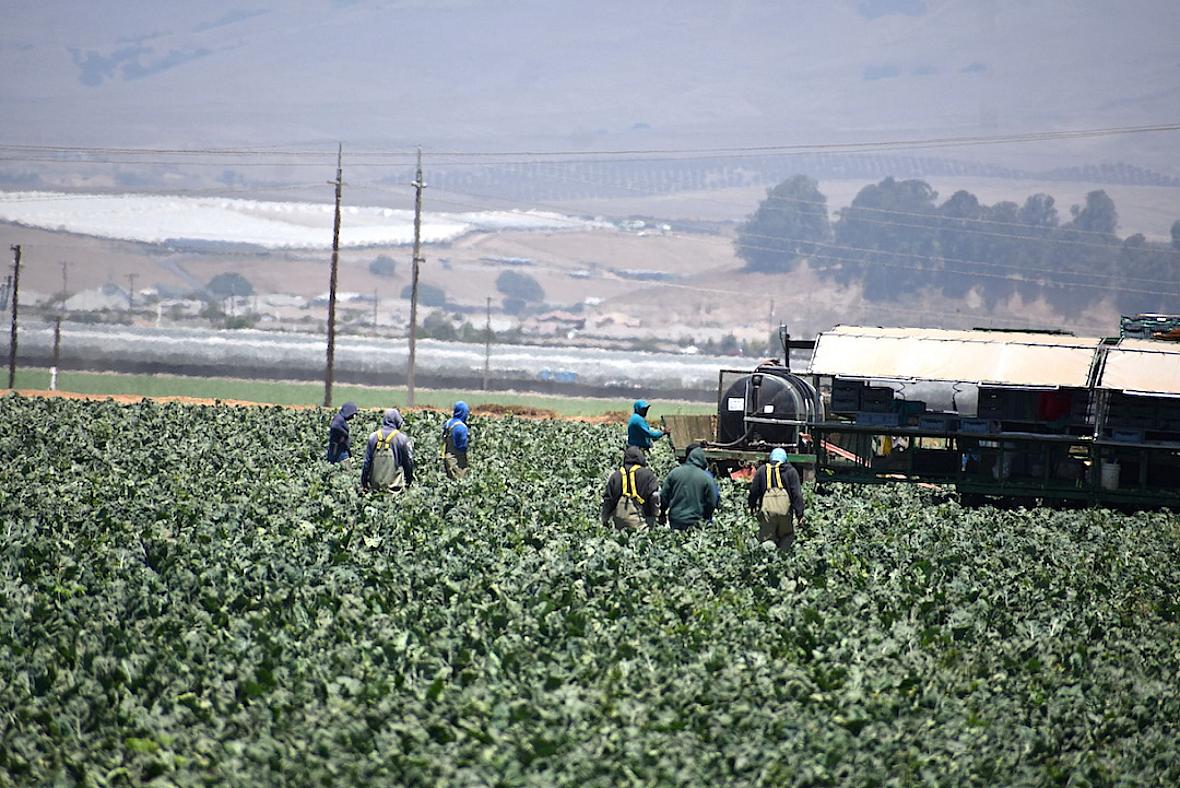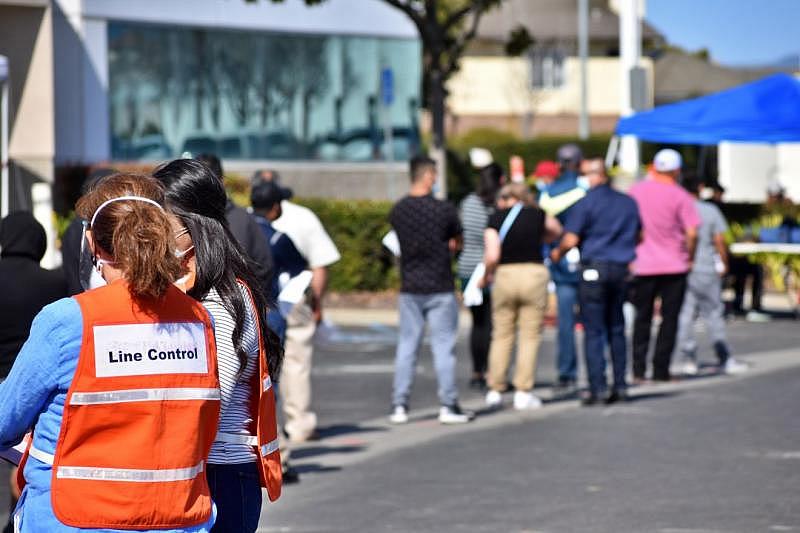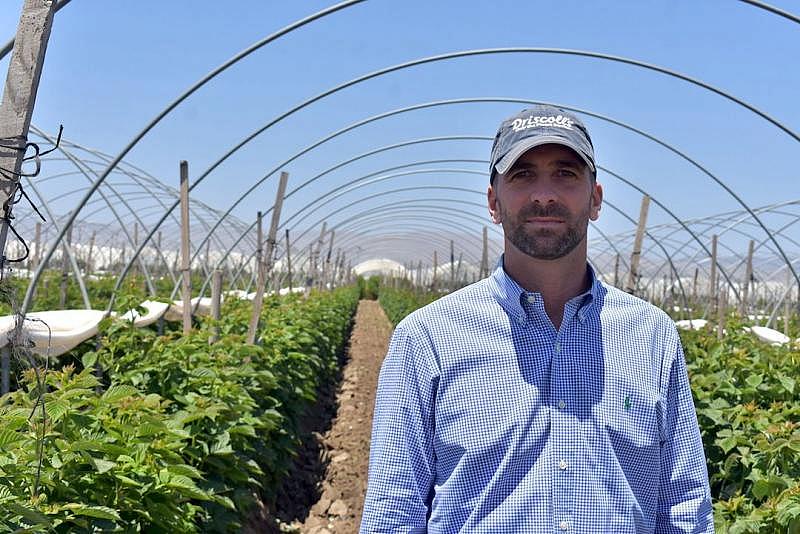Santa Barbara County Farmworker Advocates, Agricultural Businesses Reflect on Pandemic
This story is part of a larger project by Brooke Holland, a 2020 Data Fellow, who explores government and community partnerships formed in Santa Barbara County to help those at greater risk of contracting COVID-19, such as residents in skilled nursing homes, migrant farm workers, jail inmates, college students and people experiencing homelessness.
Her other stories include:
To reach Santa Barbara County’s vulnerable, public health targeted COVID-19 testing, drop-in sites
Coronavirus ‘Spread Extremely Easily’ in Skilled-Nursing Facilities, with Deadly Consequences
Santa Barbara County Public Health Partnered with Congregate Facilities on Virus Prevention
In Post-Vaccination Life, Residents Return to Lunches, Events, Visits at Long-Term Care Facilities
Maravilla Senior Living Community Held Earth Day Celebration for First Post-Vaccination Gathering
Prevention Efforts Aimed at Farmworkers Crucial in County’s Fight Against COVID-19

Local agricultural workers have been on the job, in person, throughout the pandemic, and crowded workplace and transportation environments have increased their risk of contracting the novel coronavirus. At least 64 agricultural workers have died of COVID-19 in Santa Barbara County, according to the Public Health Department.
(Brooke Holland / Noozhawk photo)
[Noozhawk’s Note: This story is one in an exclusive series investigating the toll of COVID-19 outbreaks in Santa Barbara County, and efforts to prevent and contain novel coronavirus cases.]
Some employees started working from home during the pandemic, but the region’s agricultural workforce kept working in-person in the fields and persisted through a variety of challenges, despite their risk of potential COVID-19 exposure in their jobs.
Agriculture job sites, shared vehicles that transport employees to work and shared-living arrangements present unique challenges for controlling and preventing the spread of COVID-19, according to the U.S. Centers for Disease Control and Prevention.
“They just push through because that's a common practice for most farmworkers to push through any type of ailment,” said Donna Olivera, COVID-19 outreach coordinator with Lideres Campesinas. “Even if you're in your 70s and you are still needing to work in a farm, regardless of whatever aches and pains, they feel they will keep showing up because they need the money.”
Last spring and summer, community-based advocacy groups started hearing about the virus’ spread among workers in the H-2A visa program, who frequently live in crowded housing environments.
At the time, “there were no resources in the community if you got COVID,” Olivera said of farmworkers. “There was nothing for you, no type of social safety net.”
Olivera said the organization, a network of women farmworker leaders, worked for months on pandemic outreach to local agricultural communities.
“In the middle of the pandemic, I ended up getting sick in July, into August,” Olivera said. “I got sick because I was doing outreach work in the community.”
Reflecting on more than a year of the COVID-19 pandemic, she said the “convoluted process” for testing was challenging for residents.
“If you were an indigenous farmworker with limited English, with only a cellphone in hand, getting access to the COVID-19 test, even though you had symptoms, was a challenge,” Olivera said.
Olivera helped people navigate funding assistance through the United Way of Santa Barbara County, a nonprofit organization, and she joined the countywide Latinx and Indigenous Migrant COVID-19 Response Task Force, which tackled agriculture-specific public health issues, including shared transportation to job sites and isolated housing for people who tested positive.
“People work in these small groups and it didn't allow for COVID safe regulations that were necessary, and after we've seen some of the efforts to make sure that people are safer,” said Rebeca Garcia, Santa Maria policy advocate with the Central Coast Alliance United for a Sustainable Economy (CAUSE). “Fortunately, the major outreach efforts that we have done in collaboration with (Santa Barbara County) public health have helped.”
A handwashing station, distance markers, and COVID-19 informational signs are placed outside the Reiter Affiliated Companies building in Santa Maria, as seen in late May. The company is the largest fresh multiberry producer in the world. (Brooke Holland / Noozhawk photo)
At least 64 local agricultural workers have died of COVID-19, according to the county.
CAUSE staff distributed masks and other personal protective equipment, educated employees about workplace rights, and provided information about the novel coronavirus and COVID-19 vaccine to agricultural workers.
“Throughout this time, our collaboration has adapted to meet the changing needs of the farmworker community,” Garcia said. “Our advocacy efforts have also included direct service, which is not something CAUSE typically does but it just made sense for us in this time.”
CAUSE held vaccination clinics at its Santa Maria office and provided translation and interpretation services at North County walk-up clinics, including the mass vaccination site at Allan Hancock College in Santa Maria.
Targeted vaccine efforts are even more important now, Garcia said.
Agriculture workers line up to receive COVID-19 vaccinations at a Feb. 28 clinic in Santa Maria. The clinic was organized by the Santa Barbara County Public Health Department and community-based organizations. (Janene Scully / Noozhawk photo)
The latest U.S. Census Bureau data estimate that people in more than 40% of local households speak a language other than English.
“Now, there's a lot of vaccinations that are still available, but the piece for farmworkers specifically is making sure those places have accessible language, and the cultural pieces are met that people can actually walk-in,” she said.
CAUSE is focusing on providing new education and outreach for children ages 12 to 15, who “a lot of times work with their parents and are also in pods with farmworkers,” Garcia said.
“There's so much information about COVID and just as much as there was misinformation,” Garcia said. “It was important for us at CAUSE to use our online platform to ensure that there was accurate and accessible information about the vaccine.”
Farms Adopt Pandemic Safety Measures
Some farms changed in-person work arrangements in an effort to stop the spread of the virus.
“There were modifications to some of the farms, or some of the farms were able to get access to funding that allowed them to either get a few more bathrooms or alter their workplace to accommodate social distancing in the field,” said Olivera, whose parents have been farmworkers for about 25 years, growing strawberries in Santa Maria.
Mask use was high among farmworkers, she said.
“A lot of places that farmworkers normally go to in the morning would reinforce mask wearing, so adoption became relatively easy, especially because a lot of farmers already wear some type of handkerchief over their face to cover themselves from the sun and pollen at work,” Olivera said.
Andrew Rice, vice president of production at Reiter Affiliated Companies, stands in a Santa Maria raspberry field. (Brooke Holland / Noozhawk photo)
The pandemic pushed relationships with harvest employees to a new level at a multiberry producer in Santa Maria.
The COVID-19 response “kind of forced us to become even closer with our harvest employees because the communication with them on what we were doing from a preventative standpoint and what we were doing to help try to educate them and protect them was even more important,” said Andrew Rice, vice president of production at Reiter Affiliated Companies.
“We did several rounds of — we call them sanitizing kits — where it was a basic bag with a face covering, hand sanitizer, wipes and a couple of them had thermometers in it,” Rice said. "We were constantly passing things out and fliers with facts about COVID and stopping the spread.”
Reiter Affiliated Companies, the largest fresh multiberry producer in the world, held virtual trainings and limited the number of people at in-person orientations during the pandemic, he said.
Andrew Rice, vice president of production at Reiter Affiliated Companies, stands in a Santa Maria raspberry field. (Brooke Holland / Noozhawk photo)
“When you're doing harvest and your harvest is ramping up, you have to hire a lot of people at one time,” Rice said. “The large trainings we did virtually, so it kind of forced us to think outside the box.”
The total number of employees stayed the same during the pandemic, Rice said, which includes about 800 people during the peak harvest period in August.
“Last year, we took extra precautions to ensure that they were on opposite sides of the ranch or opposite sides of the row or whatever we could do to help separate,” he added.
At Casitas Farms, a Carpinteria Valley cannabis cultivator, the 85 employees put in nine- to 10-hour days — and it’s indoors, in greenhouses and processing facilities.
Masks, temperature checks, social distancing and surface cleaning became part of the daily routine, according to manager Tadd McKenzie.
Casitas Farms provides face masks to employees and installed workstations with clear plastic walls to keep people separated from each other inside the facility’s processing area.
“We have been big on social distancing and mask-wearing,” McKenzie said.
Pandemic Impact on Santa Barbara County's Agricultural Industry
County farmworkers were deemed essential when the public health crisis began locally in March 2020. The workers fell under the federal and California’s list to “maintain continuity of operations of essential critical infrastructure sectors.”
“For the most part, most of our members did fall under these essential critical infrastructure definitions,” said Claire Wineman, president of the Grower-Shipper Association of Santa Barbara and San Luis Obispo Counties, which represents more than 170 agriculture shippers, labor contractors and other agribusinesses.
“Our members were definitely impacted by COVID. One of the big things was the market disruptions, especially early on," she said, and procuring basic supplies was a challenge for many of the businesses.
Employees at Casitas Farm process cannabis plants in the Carpinteria Valley on June 1 with dividers between work areas. (Brooke Holland / Noozhawk photo)
Agricultural crops in Santa Barbara County include strawberries, broccoli, celery, head lettuce, cut flowers, avocado, nursery products, and cauliflower and wine crops. Other commodities, including livestock and animal products, raspberries, orchids, blackberries, field and seed, and cabbage bring revenues to Santa Barbara County.
According to the 2019 agricultural production report, the county grossed more than $1.6 billion in agricultural sales, about $78 million more than the gross production value in 2018.
As of July 2020, there were about 20,000 farm employees in the county, according to estimates by the Employment Development Department.
The Grower-Shipper Association helped members keep track of all of the constant changes at the local, state and federal level.
“A hallmark of the pandemic has been the constant changes and understanding what the best practices and science are,” Wineman said. “What resources are available in the constant changes in the local, state and federal guidance and regulation."
[This story was originally published by Noozhawk.]
Did you like this story? Your support means a lot! Your tax-deductible donation will advance our mission of supporting journalism as a catalyst for change.

